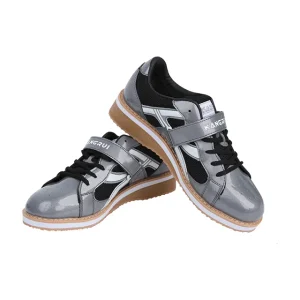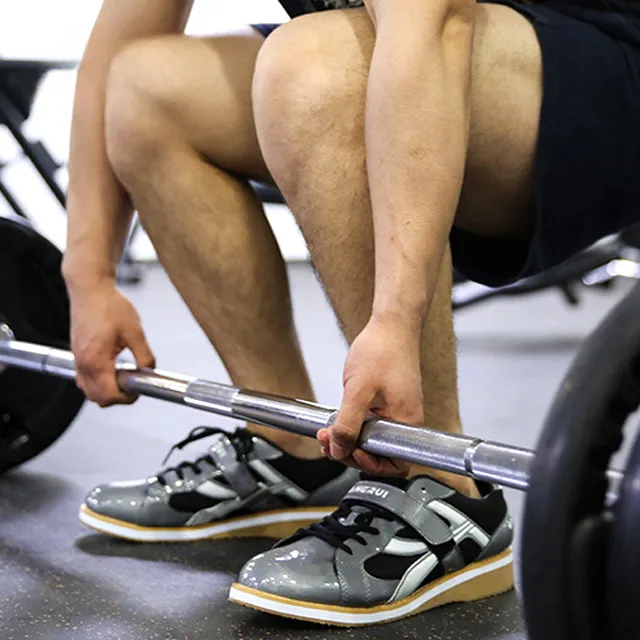Weightlifting is more than just lifting heavy objects; it’s a comprehensive training regimen that builds strength, enhances muscle mass, and improves overall fitness. Whether you’re a martial arts school, a gym, or a sports club, understanding the intricacies of weightlifting and weight training can transform your training programs and lead to outstanding results. This article delves into the essentials of weightlifting, offering valuable insights and practical tips to help you and your athletes reach new heights.
What is Weightlifting?
Weightlifting is a form of strength training that involves lifting weights to improve muscular strength and endurance. It encompasses various exercises using free weights, weight machines, and resistance bands to target different muscle groups. The primary goal of weightlifting is to enhance physical performance, build muscle mass, and increase overall strength.
Key Components:
- Free Weights: Dumbbells and barbells that allow a wide range of motion.
- Weight Machines: Equipment designed to target specific muscle groups with guided movements.
- Resistance Bands: Portable tools that provide adjustable resistance levels for versatile workouts.
Understanding the fundamentals of weightlifting is crucial for designing effective training programs tailored to the needs of your facility and its members.
The Importance of Proper Technique
Proper technique is the cornerstone of effective weightlifting. It ensures that exercises are performed safely, maximizes muscle engagement, and minimizes the risk of injury. Incorrect form can lead to strains, sprains, and long-term musculoskeletal issues.
Benefits of Proper Technique:
- Maximized Muscle Engagement: Ensures the right muscles are targeted during each exercise.
- Injury Prevention: Reduces the likelihood of acute and chronic injuries.
- Enhanced Performance: Improves overall lifting efficiency and strength gains.
Implementing training sessions that emphasize correct form will lead to better results and a safer training environment.
Benefits of Weight Training
Weight training offers a multitude of benefits that extend beyond building muscle mass. It plays a pivotal role in overall health and fitness, making it an essential component of any training program.
Key Benefits:
- Increased Muscle Mass: Promotes hypertrophy, leading to larger and stronger muscles.
- Enhanced Metabolic Rate: Boosts calorie burning, aiding in weight management.
- Improved Bone Density: Strengthens bones, reducing the risk of osteoporosis.
- Enhanced Athletic Performance: Increases strength, power, and endurance for various sports.
Incorporating weight training into your programs can significantly enhance the physical capabilities and health of your members.
Essential Weightlifting Equipment
Equipping your facility with the right tools is essential for effective weight training. High-quality equipment ensures safety, durability, and versatility in workouts.
Must-Have Equipment:
- Dumbbells: Versatile tools for a wide range of exercises targeting various muscle groups.
- Barbells: Essential for compound movements like squats, deadlifts, and bench presses.
- Weight Machines: Provide guided resistance for targeted muscle training.
- Resistance Bands: Offer adjustable resistance levels for flexibility in workouts.
- Benches: Crucial for exercises like bench presses and step-ups.
Investing in reliable equipment enhances the training experience and supports diverse workout routines.

Designing an Effective Training Program
A well-structured training program is key to achieving desired fitness goals. It should balance different types of exercises, incorporate progressive overload, and allow adequate recovery.
Components of a Training Program:
- Warm-Up: Prepares the body for exercise, reducing injury risk.
- Compound Exercises: Engage multiple muscle groups for efficient strength gains.
- Isolation Exercises: Target specific muscles to enhance definition and balance.
- Progressive Overload: Gradually increasing weight or resistance to stimulate muscle growth.
- Cooldown: Aids in recovery and reduces muscle soreness.
Tailoring training programs to individual needs ensures optimal performance and continuous improvement.
Common Weightlifting Mistakes to Avoid
Avoiding common mistakes can significantly enhance the effectiveness and safety of weight training sessions.
Top Mistakes:
- Using Incorrect Form: Leads to ineffective workouts and increases injury risk.
- Lifting Too Heavy Too Soon: Can cause muscle strains and joint injuries.
- Neglecting Warm-Up and Cooldown: Increases the likelihood of injuries and hampers recovery.
- Inconsistent Training: Leads to stagnant progress and diminished results.
- Ignoring Rest Days: Prevents muscles from recovering and growing.
Educating members about these pitfalls fosters a safer and more productive training environment.
Strength Training for Martial Arts
Strength training is integral to martial arts, enhancing performance, power, and endurance. It supports the execution of techniques and improves overall combat readiness.
Benefits:
- Increased Power: Enhances striking and grappling strength.
- Improved Endurance: Supports prolonged training sessions and competitions.
- Enhanced Agility: Improves movement speed and reaction times.
- Better Balance and Stability: Crucial for executing complex martial arts maneuvers.
Integrating strength training exercises tailored to martial arts can elevate the skill levels of practitioners.
Nutrition Tips for Weightlifters
Proper nutrition fuels weightlifting and supports muscle growth and recovery. A balanced diet is essential for maximizing training benefits and maintaining overall health.

Key Nutritional Guidelines:
- Adequate Protein Intake: Supports muscle repair and growth.
- Balanced Carbohydrates: Provides energy for intense workouts.
- Healthy Fats: Essential for hormone production and joint health.
- Hydration: Maintains performance and aids in recovery.
- Supplements: Can support nutritional needs when necessary.
Educating members on nutrition ensures they receive comprehensive support for their training goals.
Recovery and Injury Prevention
Recovery is a vital component of any training program, allowing muscles to repair and grow stronger. Effective recovery strategies prevent injuries and promote long-term fitness.
Recovery Strategies:
- Proper Sleep: Essential for muscle recovery and overall health.
- Stretching and Mobility Exercises: Enhances flexibility and reduces muscle tension.
- Active Recovery: Low-intensity activities that promote blood flow and healing.
- Massage and Foam Rolling: Relieves muscle soreness and improves mobility.
- Listening to Your Body: Prevents overtraining and identifies potential injuries early.
Implementing recovery protocols ensures sustained progress and minimizes downtime due to injuries.
FAQs
What is the best weightlifting routine for beginners?
A beginner’s routine should focus on compound exercises like squats, deadlifts, and bench presses, performed 2-3 times a week with adequate rest between sessions.
How often should I lift weights to see results?
Consistency is key. Aim for at least three weightlifting sessions per week, allowing for muscle recovery and growth.
Can weightlifting help with weight loss?
Yes, weightlifting boosts metabolism, increases muscle mass, and enhances calorie burning, contributing to effective weight loss.
What are the essential supplements for weightlifters?
Essential supplements include protein powder, creatine, and branched-chain amino acids (BCAAs) to support muscle growth and recovery.
How do I prevent injuries while weightlifting?
Focus on proper technique, start with manageable weights, warm up before workouts, and incorporate adequate rest and recovery into your routine.
Is weightlifting suitable for older adults?
Absolutely. Weightlifting improves muscle mass, bone density, and overall strength, enhancing the quality of life for older adults when performed safely.
Conclusion: Transform Your Training with Weightlifting
Weightlifting is a powerful tool that can transform your training programs, enhance athletic performance, and promote overall health and fitness. By understanding the fundamentals, avoiding common mistakes, and incorporating proper nutrition and recovery strategies, martial arts schools, gyms, and clubs can achieve outstanding results.
Key Takeaways:
- Proper Technique: Ensures safety and maximizes workout effectiveness.
- Consistent Training: Essential for continuous progress and muscle growth.
- Balanced Nutrition: Fuels workouts and supports muscle recovery.
- Effective Recovery: Prevents injuries and promotes long-term fitness.
- Tailored Programs: Customize training to meet the specific needs of your facility and members.
Internal Links:
Frequently Asked Questions
Free weights, like dumbbells and barbells, allow a wider range of motion and engage stabilizing muscles, while weight machines provide guided movements, making them easier for beginners to use safely.
Keep a workout journal noting the weights lifted, sets, and repetitions. Additionally, track changes in body measurements and strength levels over time.
Yes, weightlifting strengthens the core and back muscles, which are essential for maintaining good posture and reducing the risk of back pain.
Before lifting, consume a meal rich in carbohydrates and protein for energy. After lifting, focus on protein and some carbohydrates to aid muscle recovery.
With consistent training and proper nutrition, noticeable improvements in strength and muscle tone can typically be seen within 8-12 weeks.
Short Summary
Enhance your training with our comprehensive weightlifting guide—safe, effective, and tailored to boost strength and performance in your martial arts school, gym, or club.

